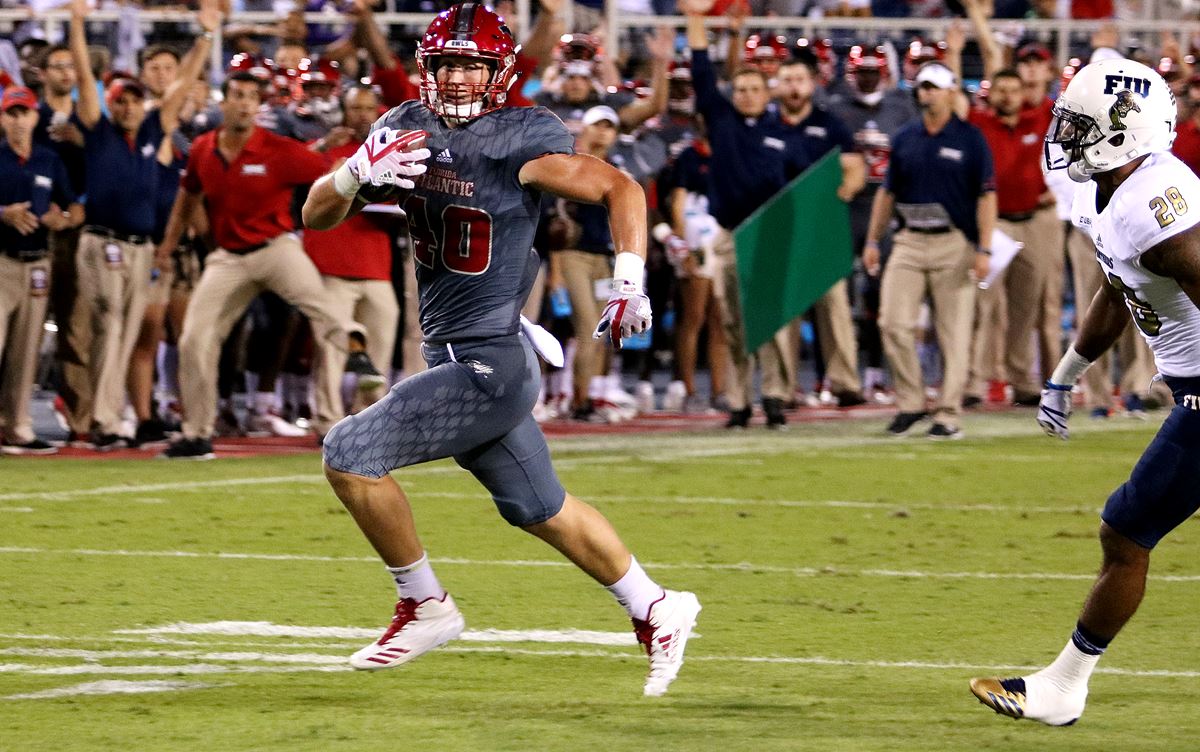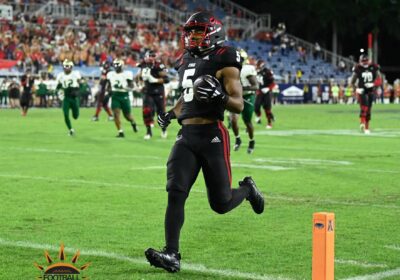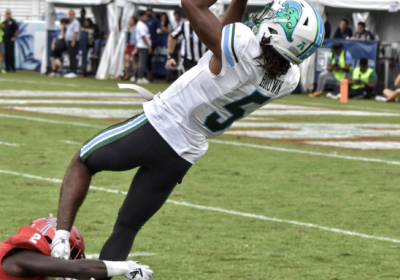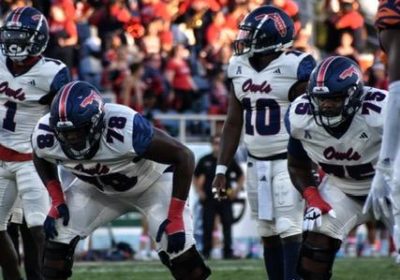[the_ad_group id=”632″]
PHOTO GALLERY: FAU Practice Photos
BOCA RATON – A personnel grouping deployed out of necessity early on may become one of FAU’s most effective offensive strategies.
The Owls’ wide receiver corps is in a period of transition, with two of last season’s top two targets exhausting eligibility and their replacements being in and out of camp with injuries. The solution? Harrison Bryant and John Raine sharing the field in two tight end sets.
“That does give people problems when you can do that because John can flex out and Harrison is a big target. His catching radius really shows up in production,” coach Lane Kiffin said. “We don’t have a ton of experience returning at receiver. When you play two tight ends that’s one less receiver that you are playing with.”
Adding a tight end in place of a receiver is simple in most cases: extra blocking replacing speed and playmaking ability. While that may seem like a plus for the run game, it often doesn’t work as planned.
Defenses can counter a traditional two tight end set by adding numbers to the box and keying the run, taking advantage of there being a lack of dynamic pass catchers on the field.
Lucky for FAU, Raine is far from traditional.
The 6-foot 2, 230 pound junior has proven to be the Owls’ swiss army knife offensively, producing from the slot, backfield, out wide, and inline position. Raine thinks his size – or lack thereof – at the tight end position helps make that possible.
“I think it’s my body type. I’m not a huge, true tight end, I’m not a small receiver,” Raine said. “I’m kind of the middle, and I use that to my benefit.”
Last year both players experienced success all over the field, but particularly in the red zone.
Bryant, especially, offers an enticing target in traffic and in the red zone.
“His catching radius really shows up in production,” Kiffin said.
Raine says the variance in their games allows them to “blend together nicely”, and added some praise for his Mackey award watch list teammate: “I mean he’s a stud, so it’s easy to play with him.”
FAU experimented with 12 personnel, or two tight end sets, at times last season, and it was extremely effective. Bryant recalled last season’s Middle Tennessee game as one of the weeks it was used best.
In that Sept. 30 contest a season ago, Raine and Bryant combined for 10 catches, 114 yards, and a touchdown. Their work wasn’t only through the air. The pair helped block for a four rushing touchdown performance from Devin “Motor” Singletary.
Kiffin was cognizant of the grouping’s success in 2017 but couldn’t use it as often as he’d like because of Raine and Bryant intermittently battling injuries. With the pair healthy and the receiver group in flux, it could be back in FAU’s offensive plans.
The Owls, however, are still trying to build depth behind their two top tight ends.
The position took a hit when Jacob Wilson went down to injury, but Kiffin insists that wasn’t the impetus behind moving D’Anfernee McGriff, who switched from tight end to running back during the spring, back to tight end.
“McGriff did some good things there late in the year even in games last year,” Kiffin said. “He could always come back to running back.”
There is still only one ball to go around and plenty of weapons in the Owls’ offense. Can it sustain two productive tight ends?
“Oh yeah. I feel like we’re going to have a really good year.” Bryant said.







Recent Comments